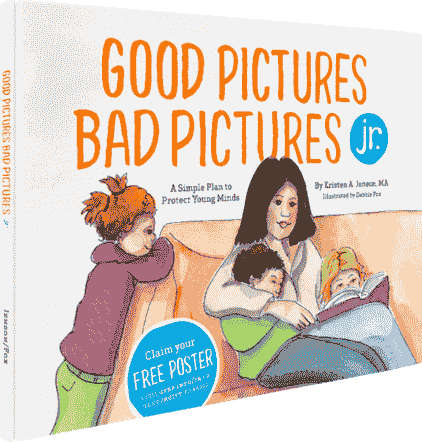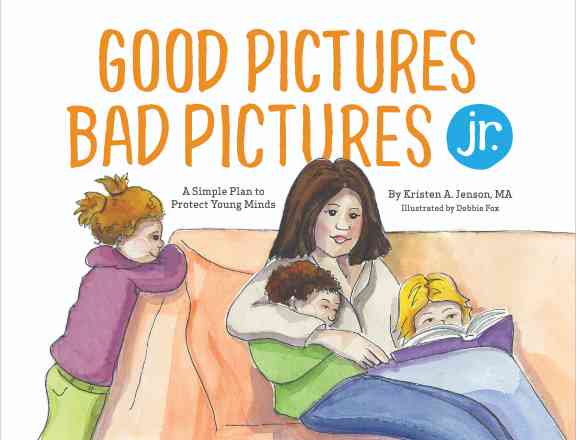.webp)
.webp)
The Truth About Porn’s Impact on Childhood Mental Health
When I was young, I would walk home from school. Sometimes, without warning my neighbor’s bulldog would get loose from his backyard chain and chase me down the street. I became terrified of dogs! After several years I learned to overcome my fear.
For me, getting chased became a formative experience, or an experience that shaped who I became. Formative moments happen for all of us and can play a vital role in mental health.
Childhood exposure to pornography can be a formative experience. How strongly it shapes someone’s future and mental health greatly depends on several factors, like age of first exposure to pornography, the type shown, how it was found, who showed it, etc.
.webp)
Ok, so how do you define pornography?
Pornography is “professionally produced or consumer-generated pictures or videos intended to sexually arouse the consumer.” In a 2023 study, 10% of young adults had seen pornography before age nine, 27% had seen it by age 11, and 50% by age 13. And where are they finding it?
Online.
Both boys and girls before age 13 mostly come across pornography through curiosity or by accident, but both through online sites. The most common sites where children had seen pornography were Twitter (now known as X) at 41% followed closely behind by adult pornography sites (37%) and Instagram (33%).
So how does exposure to pornography in childhood affect mental health?
Viewing pornography in childhood interrupts important years of cognitive child development. When children see pornography before sexual maturity, their brains struggle to understand and incorporate its meanings. Even though researchers are still trying to clearly understand the relationship, below are some current researched outcomes for exposure to pornography in childhood.
Elementary age
- Lower self esteem
- Feelings of confusion, guilt
- Anxiety and sexual uncertainty: Viewing the values and beliefs found in pornography can lead a child to feel unsure and scared of what their own sexual experiences might look like.
- Problem sexual behaviors (PSB): Instead of processing difficult experiences through talking, children use play. If a child views pornography and is struggling to make sense of it they will likely begin mimicking the actions they saw through their play at home or school. They might begin performing sexual acts on toys, on other children, drawing pictures of the acts, and more. They might need constant chaperones at school and home to prevent these problem behaviors from harming others.
Related: The 8 Best Questions to Ask When Your Child Has Seen Porn
Middle and high school age outcomes
- Escapism: Pornography serves as a means of distracting from negative emotions.
- Delinquency: It increases the likelihood of theft, truancy, manipulating others, and arson.
- Assault and violence, and sexual scripts: Pornography becomes a blueprint for “desirable” sexual experiences. That’s a big problem. Pornography displays women being choked, slapped, gang raped, hair pulled, and men performing any sexual acts at will whether or not they have a willing partner. This leads some men to believe that women want this behavior and that women believe they should passively accept this violent aggression.
Young adulthood
- Depression, anxiety, stress, and loneliness: Pornography and mental health form a destructive cyclical relationship.
- Relationship problems: Pornography usage increases risk of divorce, lower relationship satisfaction and sexual satisfaction.
- Sexually risky behaviors: It often results in unsafe sex, multiple lifetime sexual partners, and early sexual debut.
Related: How to Talk to Kids About Porn: 7 Top Tips for Savvy Parents
So what can we do about it? Here are three steps you can take now
- Clear and honest age-appropriate sex education from a parent. If children understand what real intimacy means, and how it is in contrast to pornography, they may be less tempted to seek it out.
- Set up filters on all electronics in your home. Set clear rules and boundaries around pornography, times kids are allowed on electronics, and what types of images they may share with friends. Discuss consequences with your children.
- Maintain mental health and relationships. Mental health, relationships, and pornography are connected, so seek out a mental health professional if your child is experiencing loneliness, isolating themselves, or experiencing any mental health symptoms.
Related: 7 Things Your Seven-Year-Old Should Know about Love and Sex
[[CTA]]
But how do I respond if my child is exposed to pornography? HELP!
Yes, viewing pornography may be a formative experience with negative consequences in mental health. However, positive, safe relationships can often offset negative experiences. So when a child tells you about their experience, that is the time to act (It’s ok to wait for a brief time until you can do so in a calm and supportive manner. However, don’t ignore it or put it off until you think the situation is more serious.)
You can help your child navigate the experience by creating a safe space with you to talk about it. Below are some tips for doing just that, and for how to talk to your child about pornography.
Remain calm
You might feel fear, guilt, sadness, and maybe even betrayal from your child. If you aren't careful, those feelings might come out toward your child as yelling, name-calling, shaming, giving overly harsh consequences, etc. Remember, your child is scared and confused too. Vulnerable.
Reacting harshly to them right now might create a negative formative experience about sharing their vulnerabilities with you, so be careful. You want to keep the conversation going and want them to feel safe talking with you. Focus on listening to understand them.
Related: 6 Mistakes Parents Make When They Learn Their Kid is Watching Porn
Plan
It can be helpful to tell your child you are grateful they told you, and you would like to talk about it more with them at a specific time (ex. after dinner). Use the time to work through your own emotions, plan the discussion, and prepare a partner/spouse about the situation.
Discuss
Remain calm and curious while you discuss what happened. You might say something like:
“Thank you for telling me that. That was probably really hard to do. I am proud of you for being honest. I wonder if you could tell me more about what happened. What did you see? And how did it make you feel?”
Softly ask open-ended questions, inviting them to keep sharing.
Summarize to your child what you heard them say, and ask your child if you understood correctly, or if they had anything they wanted to add. When they are finished, continue to shower the child with positivity and love. This approach will make them feel loved, heard, respected, and put the focus on the negative behavior rather than on the child themself.
My Kid Saw Porn — Now What? is a comprehensive guide from Defend Young Minds that gives you strategies to calm, comfort, and provide a step-by-step SMART plan for helping a child who has been exposed or to or started viewing pornography.
Teach
Review together what you have taught them about pornography. If you have not taught anything, use this time to begin teaching them age-appropriate details about sex and pornography, like in the Good Pictures Bad Pictures books by Kristen Jenson, founder of Defend Young Minds. Set rules and appropriate consequences around pornography and internet/phone use.
Related: Mom Guilt? 8 Tips to Overcome Shame When Your Child Sees Porn
Give consequences
If rules were broken, lovingly but firmly follow through on the consequences you had previously set. Then, talk together about any new steps you can take together to prevent what happened from happening again.
Follow-Up
Meet once in a while to discuss with your child how they are doing in keeping with the rules, and ask if they have any questions about what they have seen, or about sex in general since your last talk. Sometimes children need repeated discussions to fully process an experience. Praise them for maintaining the rules that had been set.
Be an example
As a leader in the home, be positive examples of healthy relationships and communication. Treat each other with respect–physically and emotionally. Talk about other genders kindly and respectfully.
Cultivate open dialogue and provide a healthy template
Your child’s mental health can be influenced by early exposure to pornography. But there is hope! You can use prevention and education to prepare your children. You can also provide a healthy template for positive relationships, and provide a safe place for children to discuss anything negative they have experienced.
.webp)


Good Pictures Bad Pictures Jr.
“I highly recommend this book to all people with children. A must have for all parents!” —Amazon Review
.webp)
.webp)





.jpeg)
